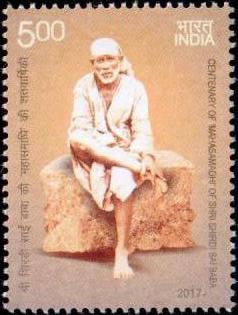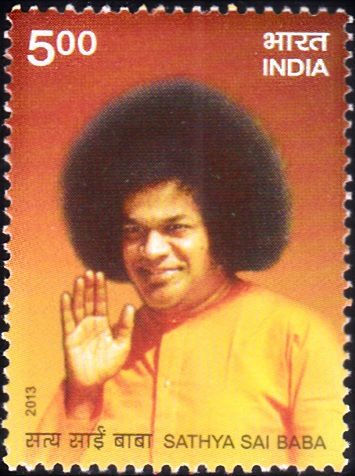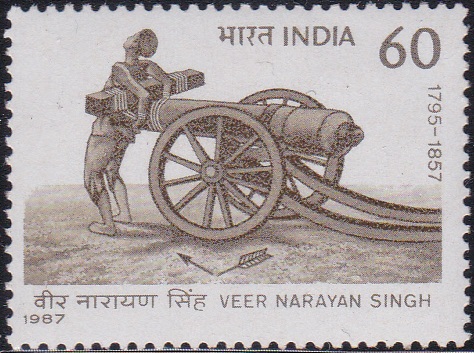
Veer Surendra Sai
A commemorative postage stamp on Bira Surendra Sai, an Indian freedom fighter and tribal leader :

 Issued by India
Issued by India
Issued on Dec 30, 1986
Issued for : The Department of Posts feels privileged to issue a Commemorative stamp in honour of Shri Veer Surendra Sai in the series “India‘s struggle for Freedom“.
Description of Designs : The 50 P multicolour stamp has been designed by India Security Press, Nashik Road. The First Day Cover has been designed by Shri Kashinath Raha. The Cancellation has been designed by Mrs. Alka Sharma.
Type : Stamp, Mint Condition
Colour : Multi colour
Denomination : 50 Paise
Overall size : 4.06 x 2.73 cms.
Printing size : 3.71 x 2.38 cms.
Perforation : 13 x 13
Paper : Indigenous Unwatermarked P.G. Coated stamp paper
Number printed : 10,00,000
Number per issue sheet : 40
Printing Process : Photogravure
Printed at : India Security Press
Name : Surendra Sai
Born on Jan 23, 1809 at Khinda, Bengal Presidency, British India [now in Sambalpur, Odisha]
Died on May 23, 1884 at Asirgarh Fort, Central Provinces, British India [now at Satpura Range, Madhya Pradesh]
About :
- The story of the first Indian struggle for freedom of 1857 would not be complete without the mention of Veer Surendra Sai. Though the great revolt of 1857 was suppressed elsewhere in India by 1858, it continued till 1862 in the district of Sambalpur in Orissa, largely due to efforts of Veer Surendra Sai.
- Born on 23rd January, 1809 in the Village Khinda about 30 kms in the north of Sambalpur in Orissa, Surendra Sai was one of the seven children of Dharma Singh. In a claim to the throne of Sambalpur, Surendra Sai rose in rebellion against the British much before there was any sign of mutiny of 1857. Surendra Sai was imprisoned for 5 years, a term which was later converted to life imprisonment.
- Surendra Sai along with his brother broke open from jail after 17 years. Soon Surendra Sai established himself with a contingent of about 1600 men and fought constant battles with the British. The British strengthened their forces at Sambalpur but in spite of all efforts, Surendra Sai still remained at large. In 1861, conciliatory measures were adopted by the British to offer free pardon to rebels. While the first proclamation of amnesty excluded Surendra Sai, his brother, Udwant Sai and his son Mitrabhanu, second amnesty proclamation extended amnesty to these three leaders. Followers of Surendra Sai continued defiance against the British. Captain Cumberledge considered Surendra Sai to be the brain behind the fresh uprising. Surendra Sai and some of his followers including his son in his own house were arrested at Khinda on January 23, 1864. It was not proved before the Judicial Commissioner, Mr. J.S. Campbell that Surendra Sai was responsible for fresh uprising and revolt. Nevertheless Surendra Sai and six others were detained at Nagpur on the ground that Surendra Sai was a dangerous political offender, likely to disturb the tranquility of the district, if released. All the seven prisoners were taken to the Fort of Asirgarh in 1866. Surendra Sai died in prison on February 28, 1884.







